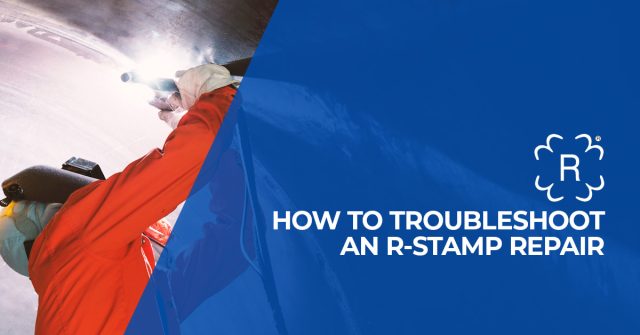
There are several reasons why a vessel may need service, however, the need for ASME R-Stamp Repair is very specific. The R-Stamp is a certification required by the National Board of Boiler and Pressure Vessels for repair of an ASME tank or vessel.
Any repairs to the pressures zones on tanks require an R-Stamp. A code repair is when a vessel’s “pressure boundary” needs repair. This could either be a cooling/heating jacket or the tank itself. A ‘non-code’ repair is when the non-pressure area of a tank needs repair.
In the case of an accident, such as a tool falling into the tank and causing damage; surface scratches and dents can typically be repaired on-site, provided they do not go beyond minimum requirements, with mechanical polishing or hand/wand electropolishing. While a scratch may be a non-code repair, any damage to the cooling/heating jacket will require an R-Stamp repair.
Reduced agitator performance or failure is often due to worn parts, improper assembly, or a bent shaft. Agitator repairs may be addressed with the agitator manufacturer or the vessel manufacturer, depending on the situation, down-time, and severity of the failure. If the shaft breaks and causes damage to the “pressure boundary”, the R-Stamp repair will be necessary.
Vessel modifications often require an R-Stamp code repair. A new nozzle addition, or any weld to a code ASME vessel may require an R-Stamp repair. Component replacement and shell repairs are typically completed on site by a certified ASME repair service tech. Apache updates R-Stamp forms and are filed with the NB and the customer. A history of all repairs is indicated on the ASME data report.
It is important to note that any weld repairs to the ASME pressures zones on tanks, require an R-Stamp. Depending on the size of the vessel and type of repair, Apache’s service techs may be able to make repairs on site or in some cases, tanks are shipped back to the factory. Apache can provide services including:
• Field service and troubleshooting to all types of stainless and high alloy tanks
• ASME / National Board R-Stamp repair and modifications
• Surface finish repairs
• Non-code repairs and modifications including piping and heat transfer jackets
• Seal and agitation repairs and modifications
• Accessory repairs
• Head and tank shell repairs
• Leak detection
• Audit and service contract available
